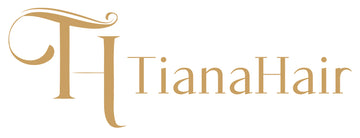Different Types of Wigs
Adding or changing the length of your hair is quite easy with wigs, and you can even put them on to conceal hair loss. If there's a specific wig you want, this guide is going to give you the right type ranging from inexpensive synthetic wigs to costly human hair wigs. We will explain the various types of wigs and their features, advantages, and disadvantages in detail, which will help you in making an informed decision that is best suited for your requirements.
1. Wigs Made Of Human Hair
Wigs created from human hair wigs are the easiest to manipulate because they can be cut, colored or styled just like natural human hair. They look and feel very real and are also available in different grades. The best grade comes from the so-called Remy human hair. As these wigs are created with human hair, they are not manipulated much and are smoother and shinier. Although these wigs are not as inexpensive as the synthetic wigs, the way they compete in reality is breath-taking when conceived as true human wigs.
Advantages: Appears natural over time, versatile for styling, durable
Disadvantages: Pricey, needs upkeep
2. Synthetic Hair Wigs
Pre-styled and offered in several colors and lengths, synthetic wigs are a cheaper option. Synthetic wigs are not as durable as human hair wigs, and lack versatility, but they do simulate the look and touch of real hair. They also require little upkeep. However, the wigs have restrictive styling capabilities because the fibers can be melted from heat stranding tools, unless they are “heat-friendly.”
Advantages: Affordable, little upkeep, already styled
Disadvantages: Not as durable, cannot be styled in various ways
3. Lace Front Wigs
Lace front wigs come with a sheer lace covering at the front of the wig that matches your skin for a natural hairline. These type of wigs enable you to style different types of hair parts with little to no effort in making the front of the wig look natural. Lace front wigs are widely used for both everyday purposes and special events.
Pros: Flawless hairline, effortless styling.
Cons: Fragile lace, care must be taken during the application process.
Full lace wigs employ an entire cap of lace, offering complete coverage. This allows for maximum styling options including ponytails and braids. They are great for long term use because they are lightweight and breathable, but come at a higher cost.
Pros: Realistic, versatile, breathable.
Cons: High in price, requires careful handling.
5. Monofilament Wigs
Monofilament wigs are constructed with fine lace mesh base in which the individual hairs are hand tied to create a “growing out of the scalp” appearance. They are breathable making them suitable for sensitive scalps. Monofilament wigs are more flexible than other wigs because you can part the hair in any direction.
Pros: Natural appearance, breathable, increased styling options.
Cons: Higher price, limited volume.
6. Capless Wigs
Capless wigs are machine-made with a more modern approach. Wefts of hair are sewn onto strips of elastic material leaving gapped areas. This design is more breathable and lighter, but they do not have the natural appearance of lace or monofilament wigs.
Advantages: Affordable, lightweight, breathable Cons: Looks less realistic
7.Polyurethane Wigs Also known as poly wigs, these type of wigs are recommended for people with complete hair loss as they are made up of a clear or flesh colored material that grips the scalp. While still being very secure and durable, these wigs are made of non-breathable material which makes them feel less comfortable.
Pros: Ideal for complete hair loss, secure fit. Cons: Uncomfortable to some, not breathable
8.For some people, these wigs are Polypropylene Wigs. A wiglet or hair topper is used to add coverage and volume to the hair with a bald spot. The extra cover can be provided without having to put on a full wig. Hair toppers are made of synthetic or human hair and are usually secured with molescomb or clip.
Pros: Loose with natural hair, blends with hair easily, adds volume, versatile. Cons: Not for total hair loss sufferers, may need adjusting 100%
9.Hand Tied Wig Unlike the previously mentioned wigs, these one's strands are individually secured onto the wig cap resulting in the wig contouring more to the skull. Because of the way the wig is worn on the scalp, this gives better comfort, along with natural movement. Being the most expensive wigs, they provide the greatest claim of natural look and feel.
Cons: Pricy, delicate handling is required
10. Non-slit Wig
These wigs are used by those who have very little or no natural hair as non-slit wig grips the scalp with silicone or polyurethane. This type of wig is ideal for people having total hair loss as the wig can be put on without the use of glue or clips to keep it in place.
Pros: Secure the wig on the head effortlessly and comfortable for people having hair loss
Cons: May irritate the skin, can not be used by people with some hair
Conclusion
In picking a wig one has to keep in mind things such as type of hair, material of the wig, the wig covering styling needs, and how comfortable it is. Human hair wigs may be the costliest option, but they offer stunning styling as well as the most natural appearance. Synthetic wigs would be the best inexpensive option as they are cost effective. Monofilament wigs are a fantastic option when it comes to breathability and natural appearance. For the ones looking for versatility and reality, lace front and full lace wigs are ideal choices. Whichever option, full wig, topper or partial wig you seek, there is one that’s just right for you. Knowing the various types of wigs in stock aids in making sound judgments and gets the attention wardrobe piece that you desired.




Hinterlassen Sie einen Kommentar